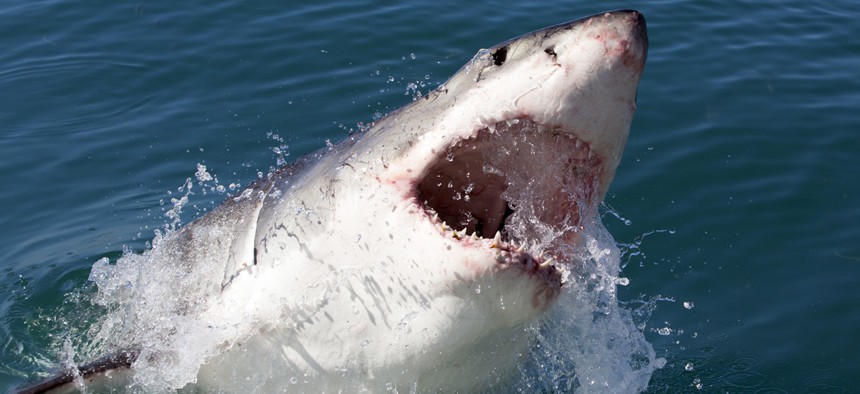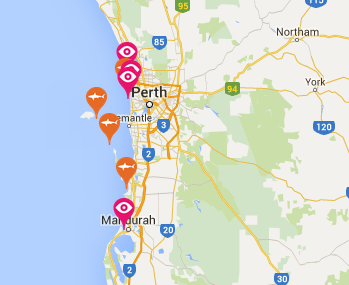Tech Tools That Let You Get Closer to Sharks

Mogens Trolle/Shutterstock.com
A roundup of apps, websites and livecams that will get you close—but not too close—to hammerheads, great whites and other ocean beasts.
Let me start by saying this: Your chances of getting attacked by a shark are infinitesimal. It’s more likely that you'll win a mega jackpot in the lottery than be killed by a shark—and probably, almost certainly, neither will happen.
There have, however, been a spate of shark attacks off the coast of North Carolina this summer—seven in a matter of weeks, which is enough to make even the coolest statistician pause before taking a dip.
So perhaps you’d prefer to encounter bull sharks, bronze whalers, and great whites from the relative serenity of the Internet. There are several shark trackers that share nearly-real-time geolocation information for sharks in oceans all over the globe. (The sharks that scientists have tagged, anyway.)
The best known database is probably Ocearch, a global shark tracker (and mobile app) that lets you filter search results by a shark's gender, age, and recent activity. You can even follow an individual shark by name—like Esperanza, Oprah, or Yolanda. As I'm writing this, Wyatt, a seven-foot hammerhead, was just pinged near Port Aransas, Texas.

There’s also a shark tracker devoted to watching tiger sharks circling the Hawaiian Islands, which updates whenever a tagged shark’s dorsal fin breaches the water’s surface, according to the Pacific Islands Ocean Observing System’s website. Here’s a video that shows what it’s like for scientists to attach those little fin trackers:
There are real-time video options, too. Explore.org’s Shark Cam appears to be on the fritz at the moment. (There's always the Walrus Cam and Bee Cam in the meantime.) For a not-so-authentic alternative to the open ocean: Monterey Bay Aquarium livestreams the action in a tank full of hammerheads, tunas, rays, and sea turtles 12 hours a day.
In Australia, there's SharkSmart, a mapping tool that doubles as a reporting system for people who spot sharks while they're surfing or swimming. (Which means there’s eyewitness info about the whereabouts of at least some sharks that aren’t tagged.)

And though it may be unnerving to see the icon for a great white shark moving slowly up the coast of Western Australia, humans are a greater threat to sharks than the other way around. Researchers estimate around 100 million sharks are killed every year—and possibly many more than that—which exceeds the threshold for sustainability of many shark species. In other words, when it comes to shark attacks, the shark is usually the victim.
(Image via Mogens Trolle/ Shutterstock.com)
NEXT STORY: Like duct-taping airbags to a '65 Mustang


